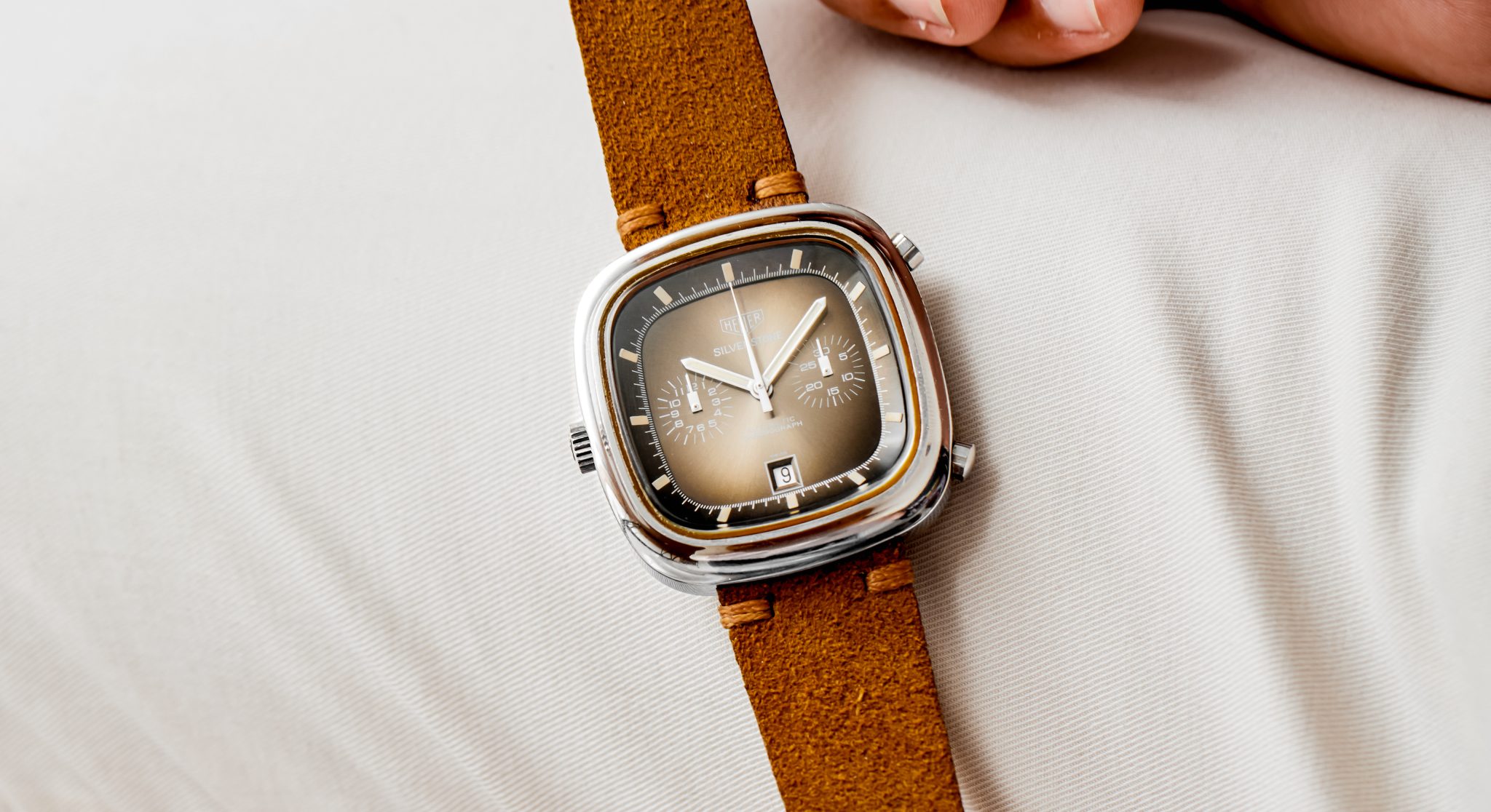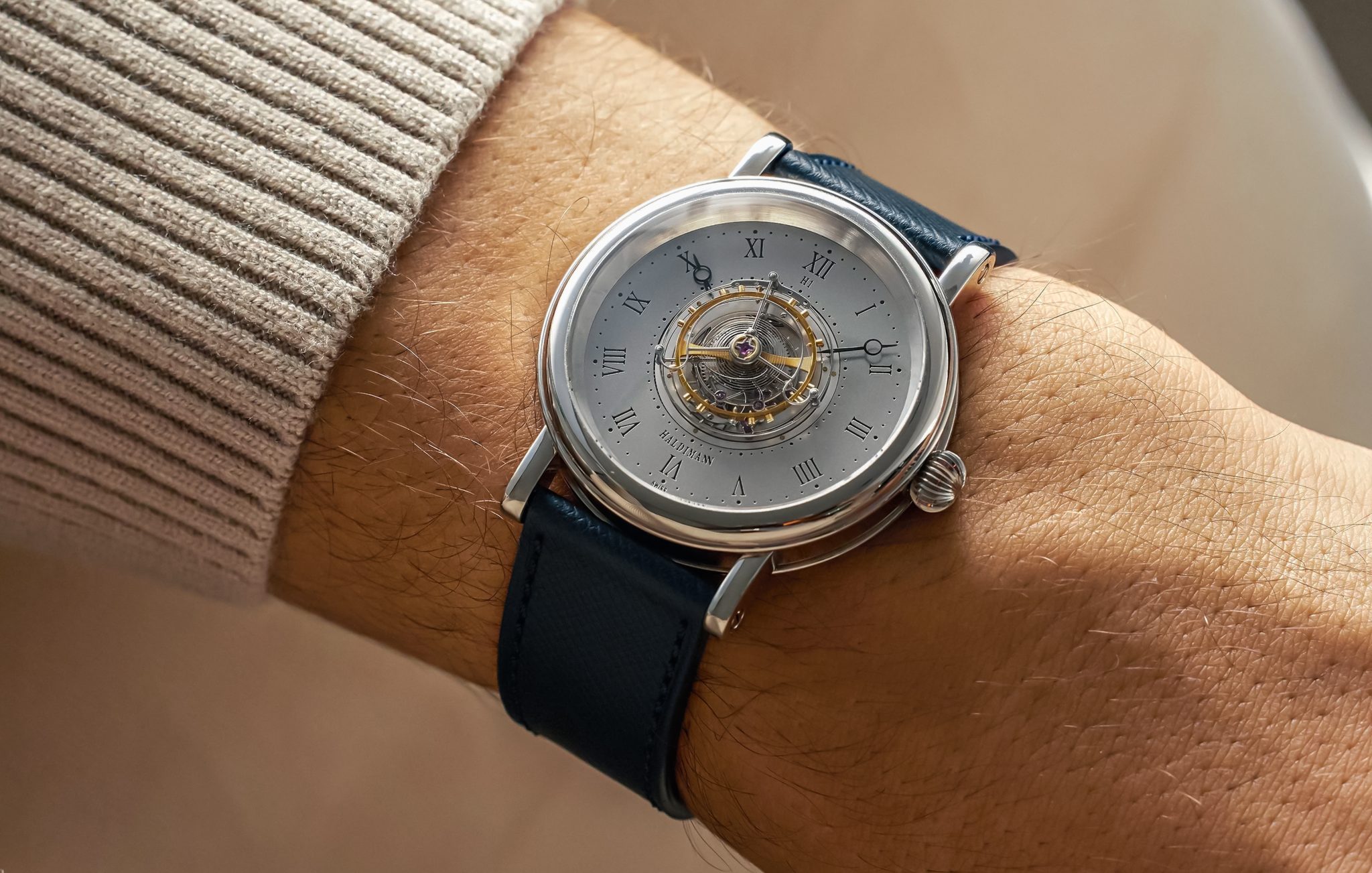
Haldimann H1 Flying Central Tourbillon
There’s no CNC machine at Haldimann, an independent whose philosophy is about as far from Rolex as watchmaking gets. The most modern machine they have is an optical microscope from the ’60s. I suspect if you showed an iPhone to Beat Haldimann he’d shout witchcraft and report you to the church immediately. Haldimann’s workshop and entire operation is his home, a villa overlooking the river Aare in Thun that has a deliberately meditative vibe. His eponymous independent manufacture makes 20-30 watches per year, entirely in the old way, including the old lifestyle of watchmaking in one’s home. He started at 27, in the steps of his ancestors who made pocket watches back to 1642. He started with a resonance clock in 2000 and then landed on the design which won him his reputation in 2002, this H1 Flying Central Tourbillon wristwatch. In 2005, he united the two concepts in the H2 with two flying tourbillons in resonance. Each is something approaching kinetic art with dramatic motion observable dial-side.
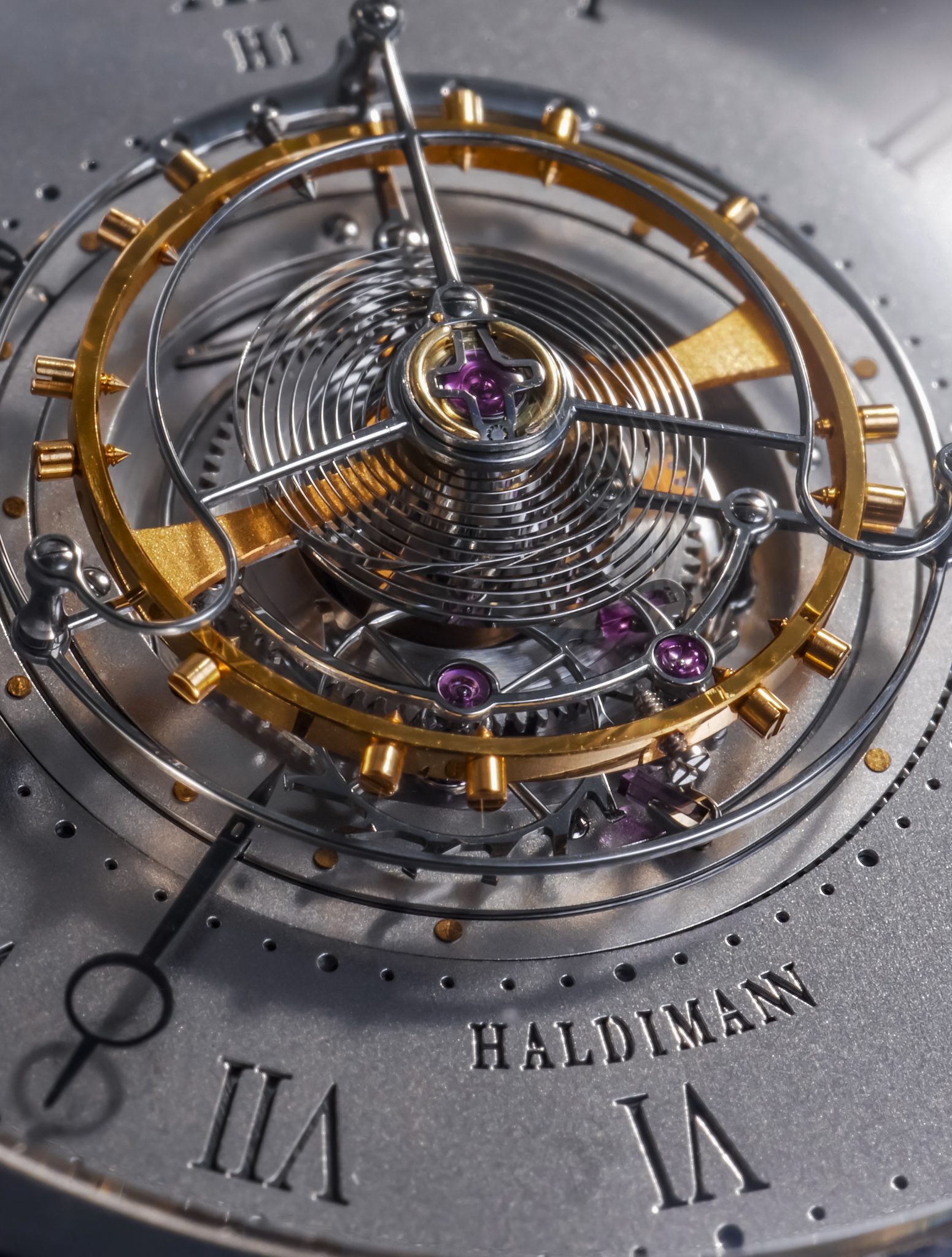
Usually, I am of the opinion that tourbillons are cooler when hidden, a bit of stealth complication. But there may be no better, more impressive presentation of the complication than here; the lyre-shaped cage itself is 17mm and can only be finished by the most experienced watchmakers at Haldimann as any pressure during finishing would distort its shape. That mass takes three mainspring barrels to power, two for the tourbillon and one for the Pomme style hands. It dominates the dial experience, which if you look closely also sports a brushed rehaut and engraved, lacquer-filled numerals. The case is 39mm in platinum and if you look closely, the sides are concave. Interestingly, earlier production pieces such as this 2005 sport ‘H1’ at 12, which disappeared in latter examples. Only one H1 has ever come to auction, Sotheby’s 2011, where it returned 82K. For 2011, that’s an incredible result, but they’d be far more now.

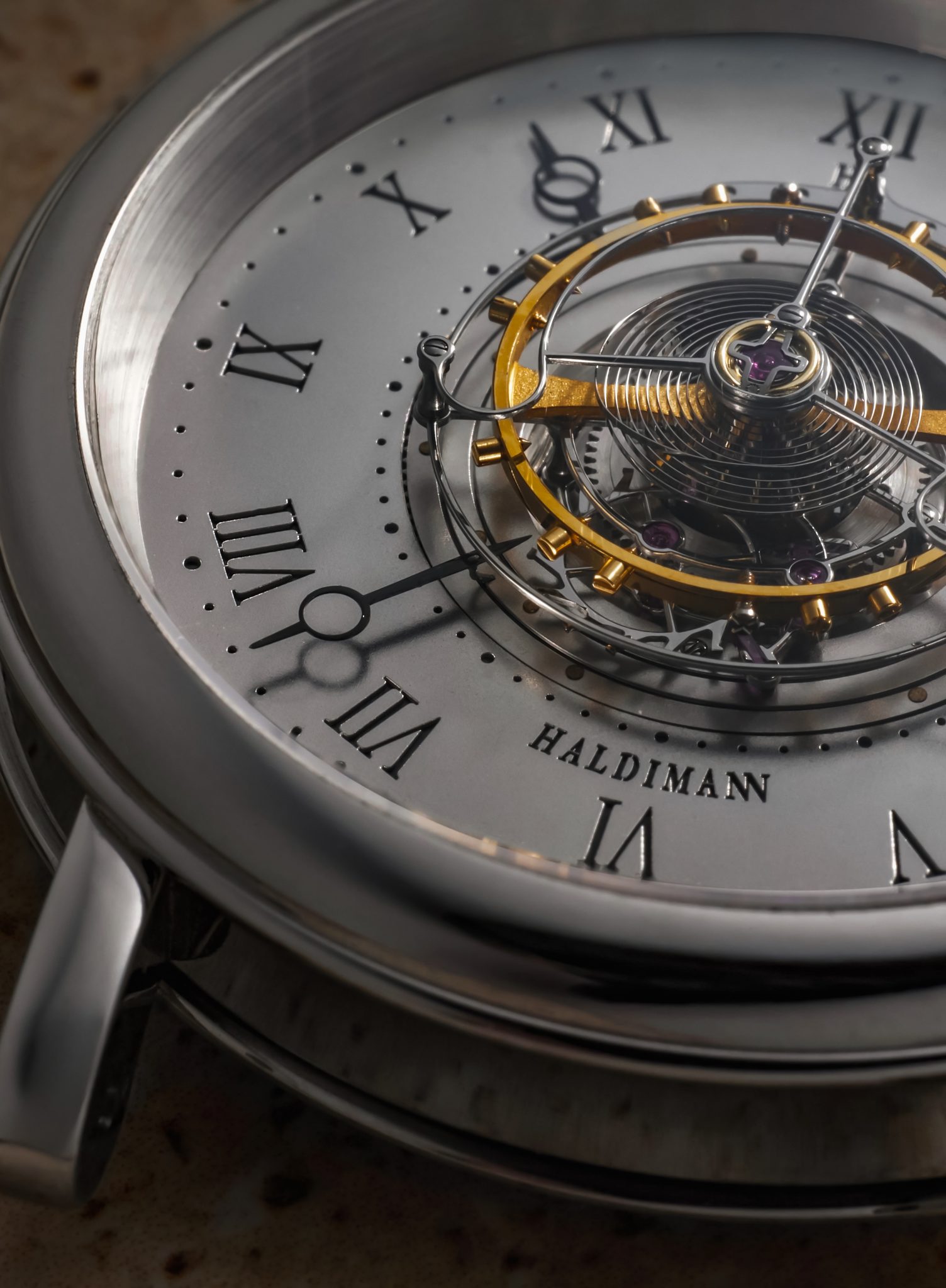
We all are susceptible to lazily group independent watchmaking in one bucket, as if it were one entity. Despite sharing huge time investment in handcraft, Haldimann is nothing like Journe, who is nothing like Charles Frodsham,or Laurent Ferrier. Each manufacture has clear personality and widely distinct aims. Journe is growing, industrializing, and appreciating. Haldimann, not so much. Production remains tiny, there’s no publicity, and no boutique in Beirut. Haldimann don’t aim to grow. Haldimann will still restore and service any pocket watch bearing their name, free of charge. And each watch is guaranteed for its lifetime, also free. This is what Zagato coachwork is to Ferrari, the product may look the same to an untrained eye, but there’s so much more happening behind the curtain to make it look that way with a vastly smaller operation. Their operation is carrying the flag for traditional watchmaking, aiming to be passed down for generations. Except unlike Patek today, I believe them.
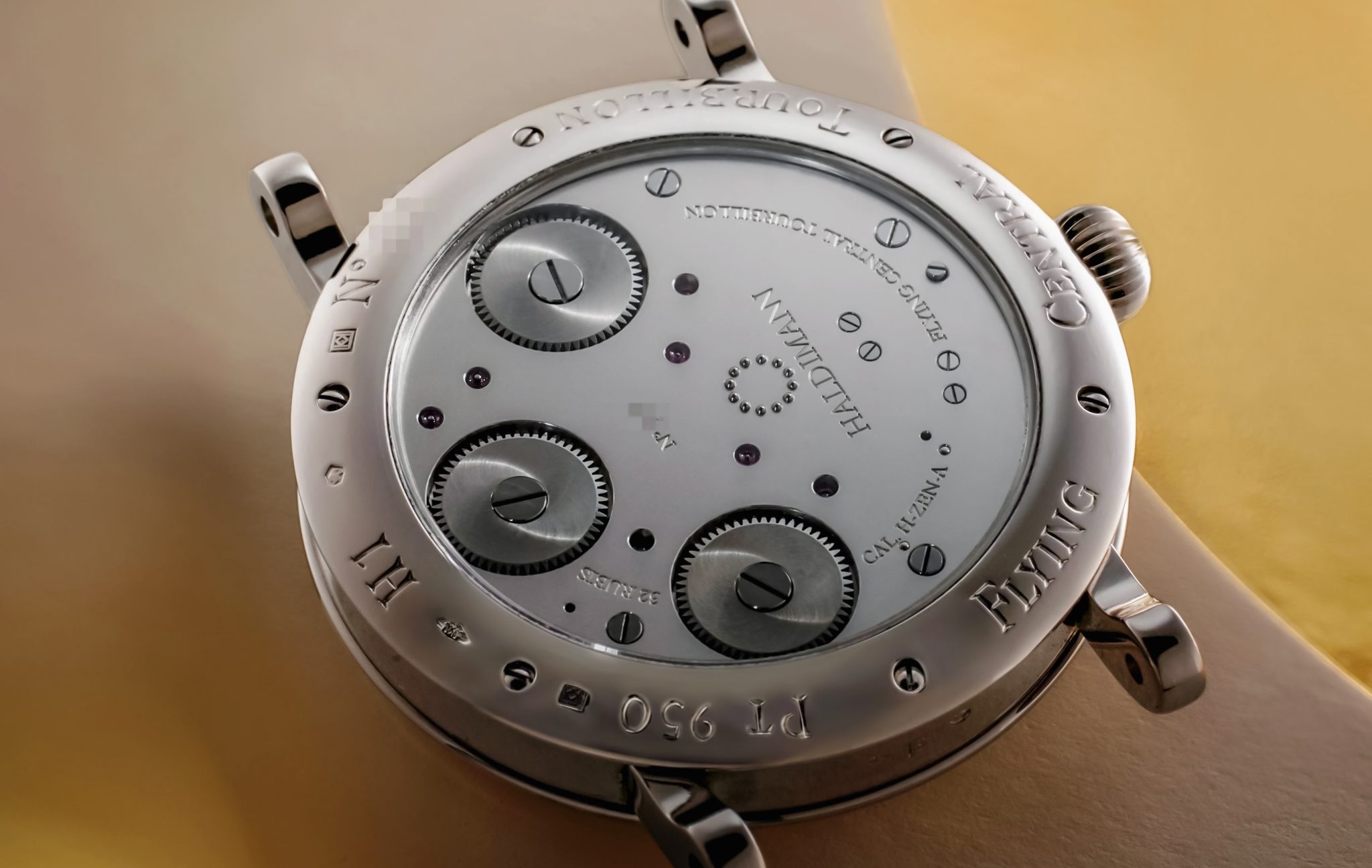
This example is in great condition overall. Its case sports light, minimal surface wear but that patina is visible. The hallmarks are all deep, crisp, and indicate there case hasn’t been touched. Its dial and base plate show no damage whatsoever. It comes with its full set from a well-regarded London retailer.











